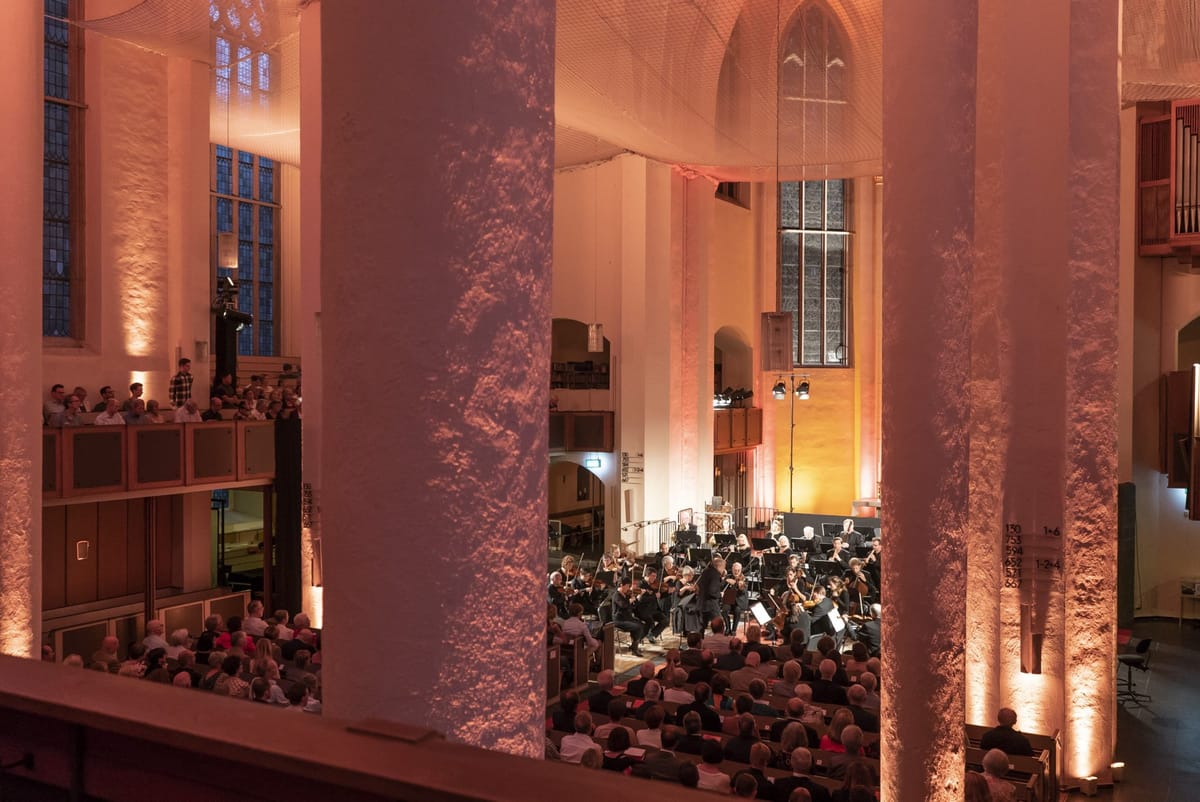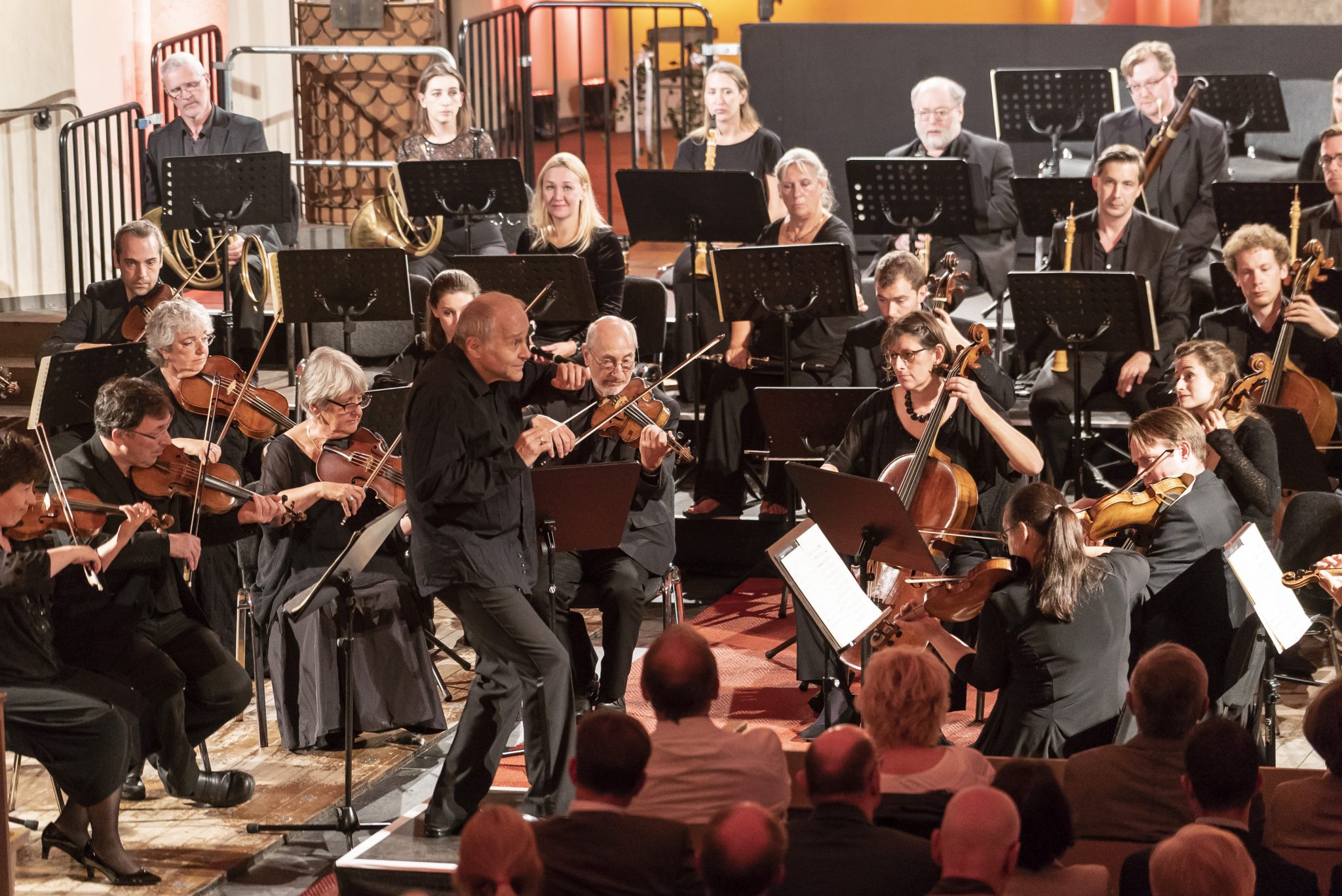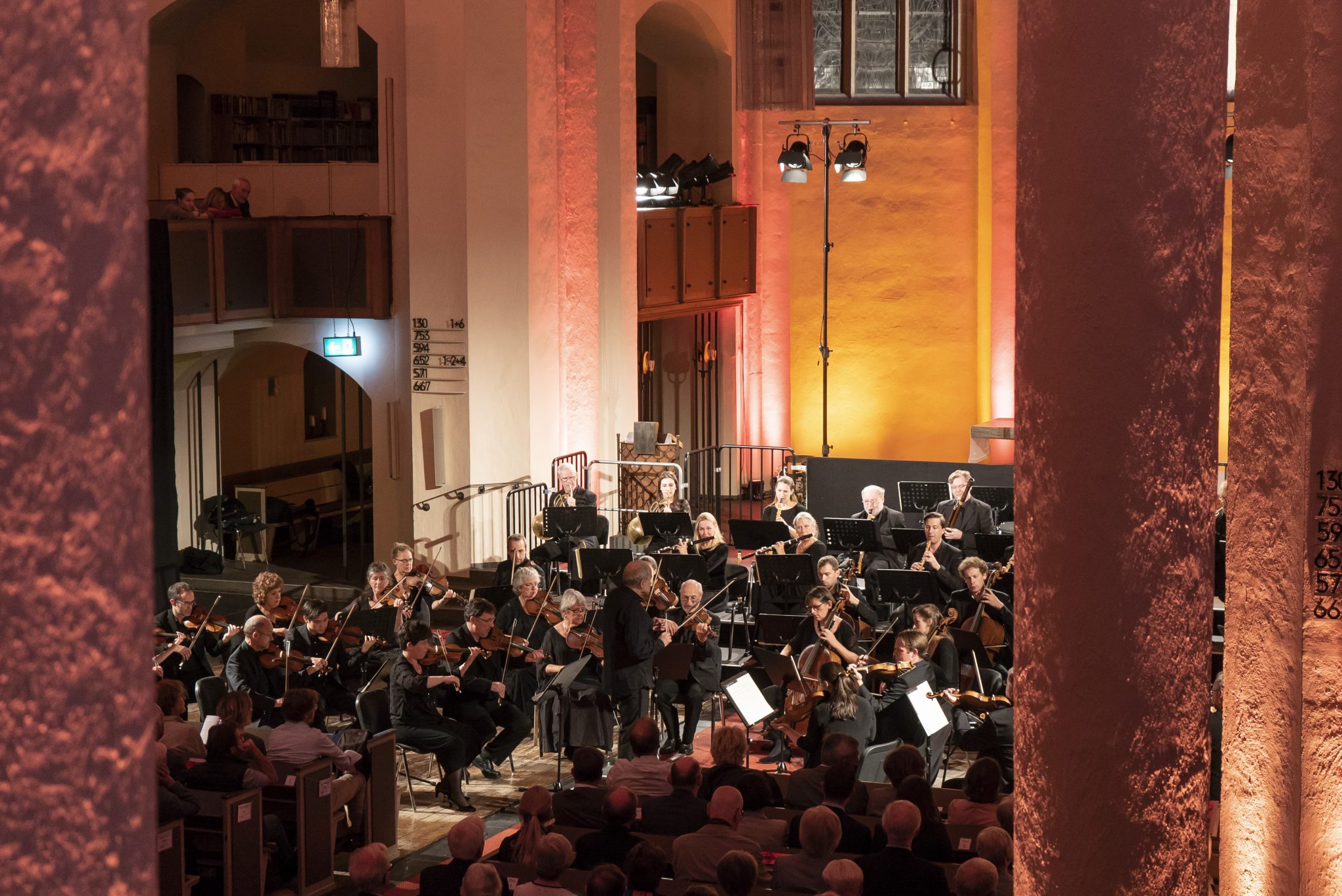Battle, Drumroll and Enlightenment

A week into Beethovenfest, the magic has failed to subside. The air is still abuzz with excitement with concerts taking place regularly, providing much on offer for, and tailored to, the varied, musical inclined population of the city of Bonn, Ludwig van Beethoven’s birthplace. This time, we shift to Kreuzkirche, the largest church in Bonn, and the venue for the concert by the Orchestra of the Age of Enlightenment, a period instrument orchestra, hailing from London, and conducted by Hungarian conductor Adam Fischer. The repertoire for the evening was firmly rooted in late-Classical era music with two pieces by Beethoven sandwiching a symphony by his teacher, Joseph Haydn.

Opening the program was the Coriolan Overture by Beethoven, a dramatic work written in C minor, a key favoured by him for intense, heroic and stormy works. Indeed, in the context of this piece, written possibly by Beethoven for a performance of Heinrich Joseph von Collin’s five-act tragedy Coriolan, the music reflects Coriolanus’ (the titular character of the play), tenacity for war and his invasion of Rome. The powerful, opening chords are indicative of a call to war, starting with his army’s march into battle through the main, agitated theme in C minor, which are interspersed with lyrical sections in E-flat major, the relative major, which are indicative of Coriolanus’ mother’s pleas to desist. The climax starts with Coriolanus’ resolve broken, and giving into his mother’s pleas, but unable to turn back. The build-up to the end is formed to through a recapitulation of the opening chords, and then a fade out through a quiet melody in C minor, played by the cellos, implying Coriolanus’ suicide as a result of being unable to betray his army of former enemies. Throughout the piece, Fischer displayed his full prowess in conducting, with his enthusiastic style reciprocated by the very proficient orchestra. The effective use of dynamics to not only convey the themes, but also reinforce the rhythmic structure, lead to an interpretation and sound that very few orchestras in the world could duplicate. The performance was thoroughly enjoyable, and served as an appetizer for the feast of music that was laid out for the evening.
After a brief round of tuning, the ensemble took up Haydn’s Symphony No. 103, marked by the long timpani roll in the first movement, that earns the symphony it’s nickname ‘The Drumroll’. The basses then took up a calm, somber melody, in Adagio, with interjections by the winds, before finally passing the melody to the violins. The key of this introduction was somewhat ambiguous, and alternated between C minor and E-flat major. Closing the theme, we turned to the next part of the movement, an exuberant section in major with a tempo marking of Allegro con spirito. The movement ended with a short recapitulation of the introduction and then a burst of the energetic portion. The next movement, written in the so-called ‘double variation form’, employed two themes in C minor and C major and then presented variations on these two themes. A remarkable feature was the violin solo present in one of the variations, executed adeptly by the concertmaster through usage of rubato, dynamic swells and shaped phrasing. The movement ended with a soft, pizzicato variation of the themes, and ushered in the third movement, a grand minuet, a common dance and musical structure prevalent throughout most music belonging to the Classical era. This minuet, however, had typical characteristics that would make one immediately think of Haydn, and his unique style, which has subtle difference from both Mozart, his friend, and his pupil, Beethoven. Finally, we came to the final movement, again spirited, but this time a rondo, announced by a horn, which is then echoed in the background over the main theme. One should remark on the way this symphony was performed: in the hands of Fischer, and the sound of the Orchestra of the Age of Enlightenment, the interpretation brought out the spirit of Haydn, a jovial personality, fickle-minded but extremely thoughtful, who seemed to believe that by expounding on simplicity, one could produce the greatest works of music. I would say that this symphony, and the very engaging way in which it was performed was a testament to that.

Following an intermission, we then turned to the final act: Beethoven’s Symphony No. 5, a work that is performed recurrently by orchestras all over the world. This would perhaps be the second or third time that it is being performed during Beethovenfest, which this year, actually based its main theme on Beethoven’s fascination with the key of C minor, which is the primary key of this symphony. In the context of the evening’s concert, it was another addition to the other two pieces revolving around C minor, it’s relative major and its relative minor. Opening on the characteristic four-note motif, which would be echoed throughout the whole symphony, the main theme is immediately introduced and developed, through use of imitation and variation of the motif. The interpretation opted was a more eerie one, as if one, and it felt as if it was indeed ‘fate was knocking on your door’. The second theme, written in the relative major, was more lyrical and quieter, offering a break from the darkness of the tragic key of C minor. The movement closed on a recapitulation of the first theme, with a brief ad lib. oboe solo of ethereal calmness, and then a very dramatic, fortissimo coda. Like the first movement, the second movement immediately announced its theme, a melody played by the violas and cellos. The movement again employs the double-variation structure, and closes with the whole orchestra involved in a fortissimo. One could also note the traces of Haydn influence on shaping the musicality of Beethoven, in this very movement. The third movement, a scherzo, featured a recap of the motif from the first movement, played in fortissimo chords, and involves the basses in a prominent role. The sound evolved almost like a pendulum, with the momentum of the sound being transferred through each section in a fluid-like manner, dictated by the involved and energetic gestures by Fischer, who seemed to have been in full control of the music, while invoking the spirit of Beethoven. We were then led, attacca, into the final movement in C major, through a beautiful transition. The resounding and triumphant theme echoed throughout the church, and before the coda, we were treated to a short recapitulation of the scherzo. After a long coda, and a bit of tempo play guided by Fischer, the symphony and the program came to an end. The finale marked the enlightenment we were promised, a steady journey from the tragic key of C minor, to a resounding victory in C major.
With no second thoughts whatsoever, I would like to say that this concert would probably be one of the best concerts of I have ever heard in my life so far. From the thoughtful choice of the program, built around a theme suited for Beethovenfest, to its execution via a masterful interpretation, everything was impeccable. The main feature that seemed to have stood out was the conducting: Fischer’s control of the music, his gestures to signal articulations and dynamic swells were remarkable. However, one should not forget the ability of the orchestra to be able to coordinate perfectly and adapt to the conductor. I look forward to hearing them play at some other event, and also look forward to the other treasures offered at Beethovenfest.





